Today, we are witnessing an escalation in global events that is affecting the markets. India, after targeting terrorist camps, has now struck the defense systems of the Pakistani army, responding to significant casualties on the Indian side. This escalation has caused market reactions, with the rupee falling rapidly by almost a rupee in just 24 hours. Additionally, the Karachi Stock Exchange has hit its limit down, while our markets also saw a decline of about 1%.
Where is the market headed?
Market Overview
Today, Nifty lost 0.58%, recovering from a low of 24,150, with around 130 points recovered from the bottom. There wasn’t any dramatic move either way, but after news broke around noon regarding the escalation, the markets gave up some of the gains.
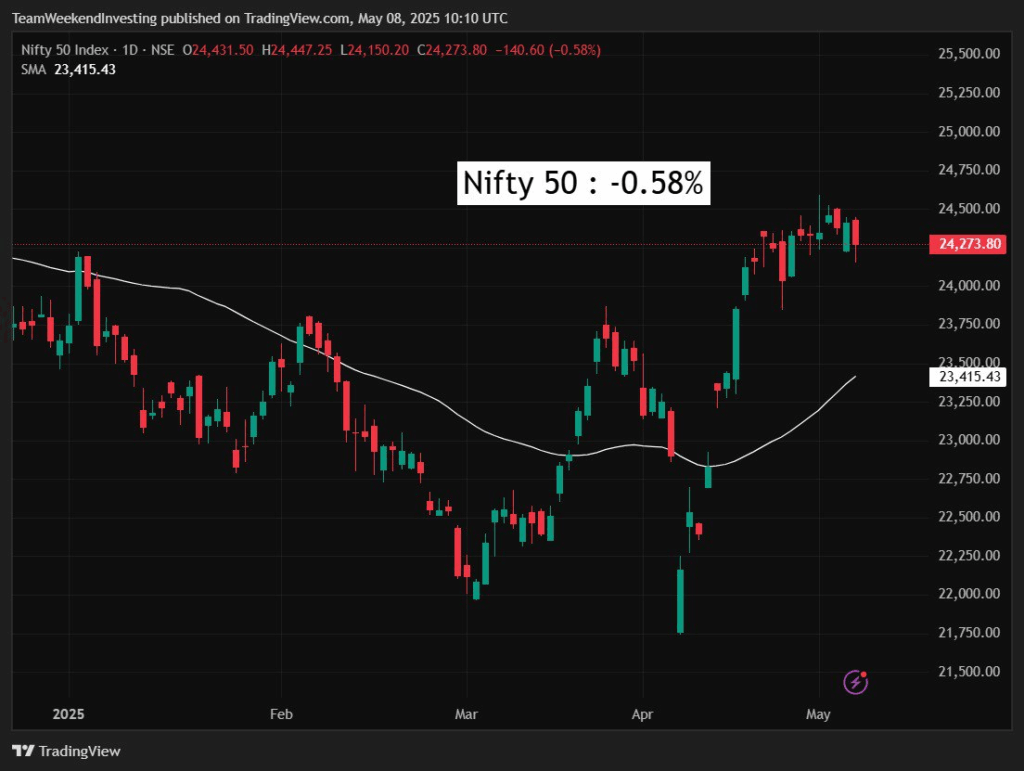
Nifty Next 50
The broader market saw a greater decline with Nifty Junior losing 2.14%. In the Nifty Next 50 space, BPCL, Indigo, TVS Motors, DB’s Lab, Torrent Pharma, TLF REC, PNB United, and practically almost the entire spectrum were down, except Canberra Bank, which came out with some decent results.
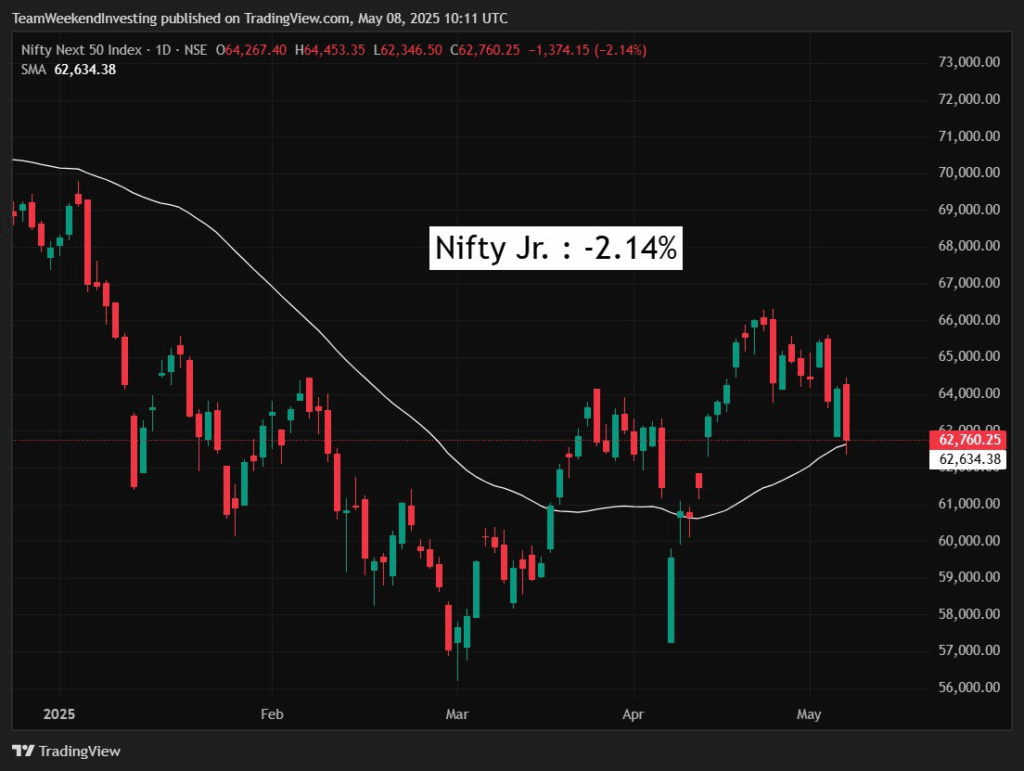
Nifty Mid and Small Cap
Mid-caps lost 1.76%. Small caps also saw a decrease of 1.19%, reflecting a similar zigzag pattern as the broader market.
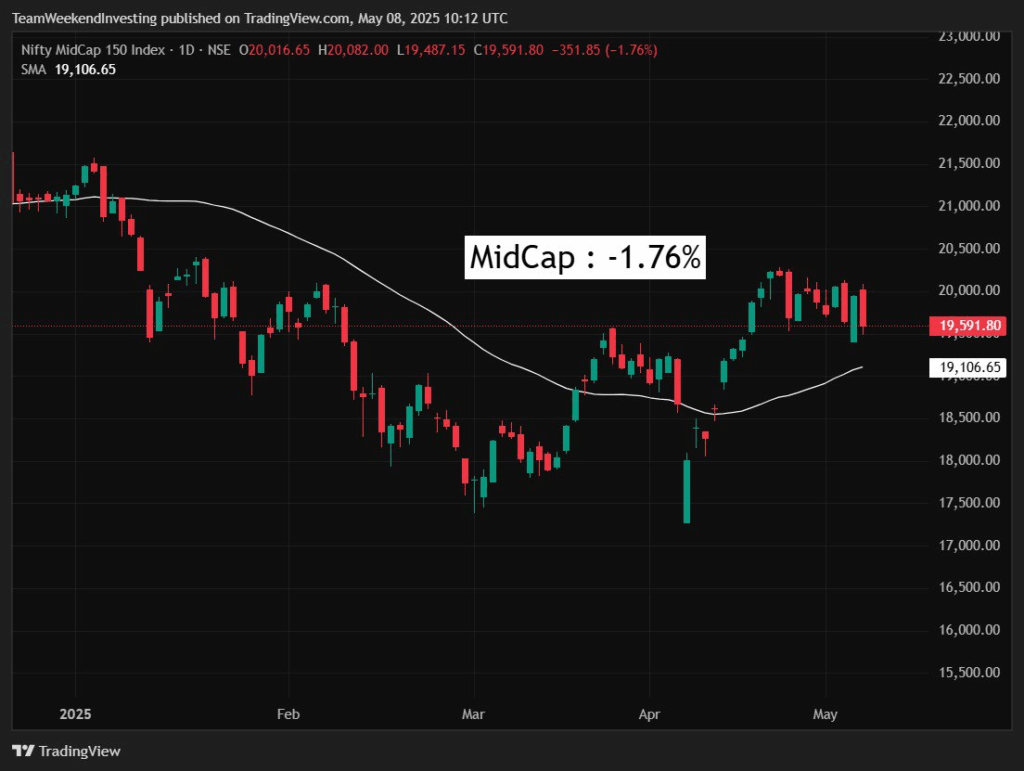
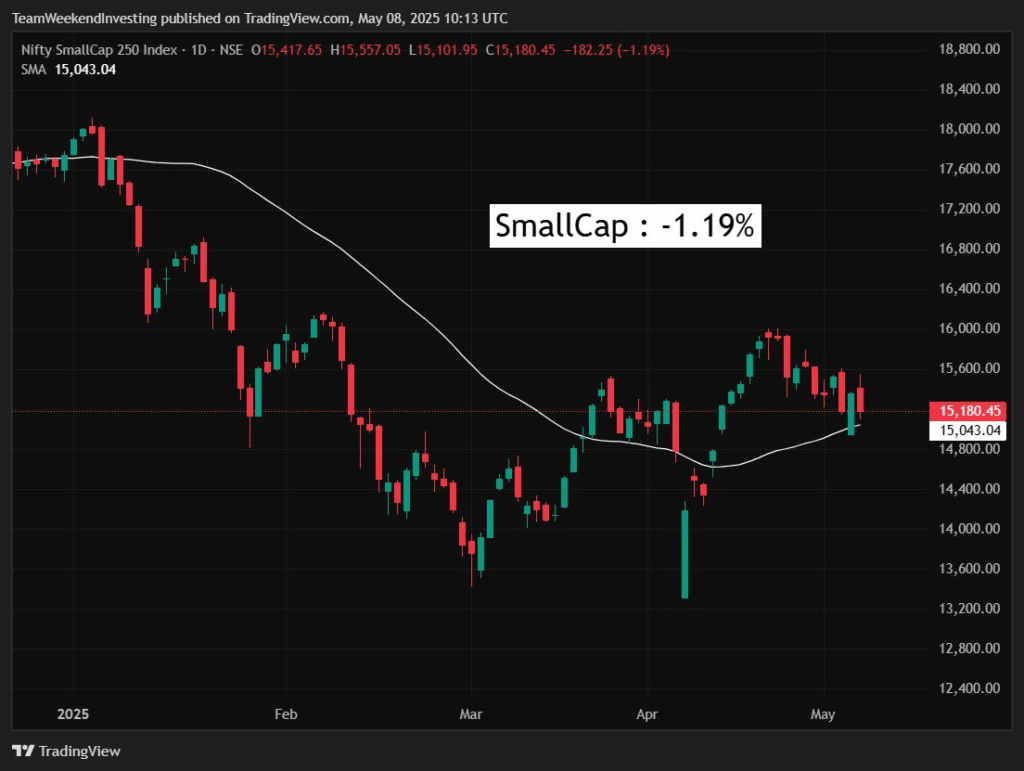
Bank Nifty
Bank Nifty was down by 0.45%, though it was not as much as the other segments. It seemed that there was no significant institutional selling happening in the large-cap stocks.
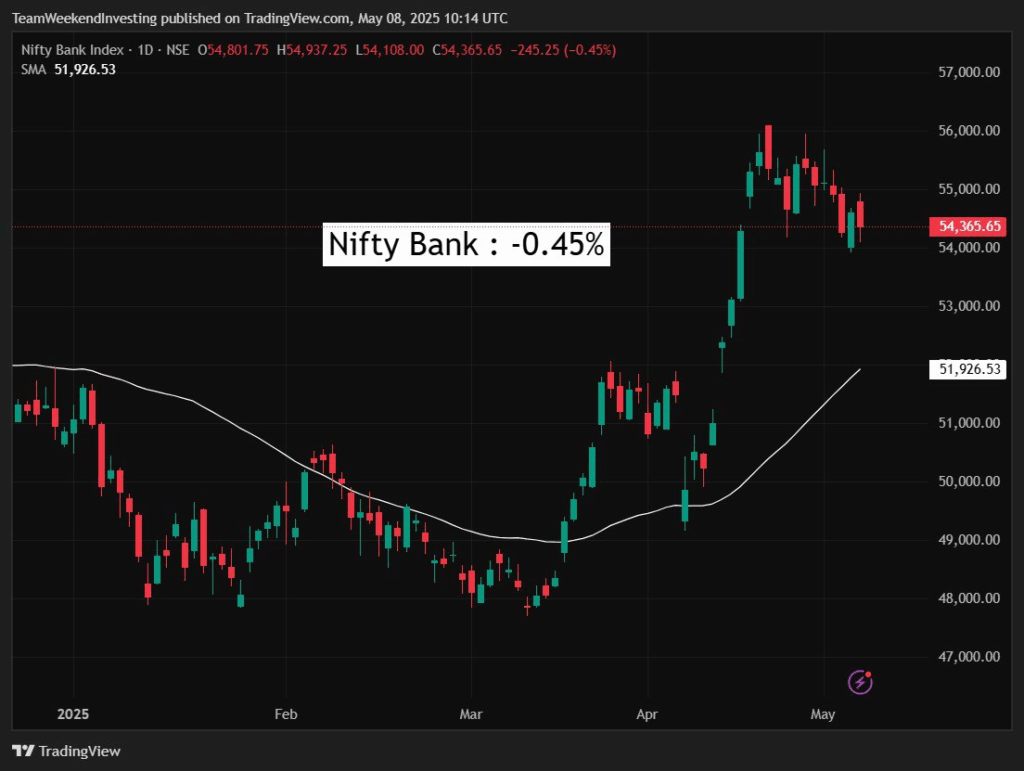
GOLD
Gold recovered somewhat, gaining 0.45% and holding around 97,500.
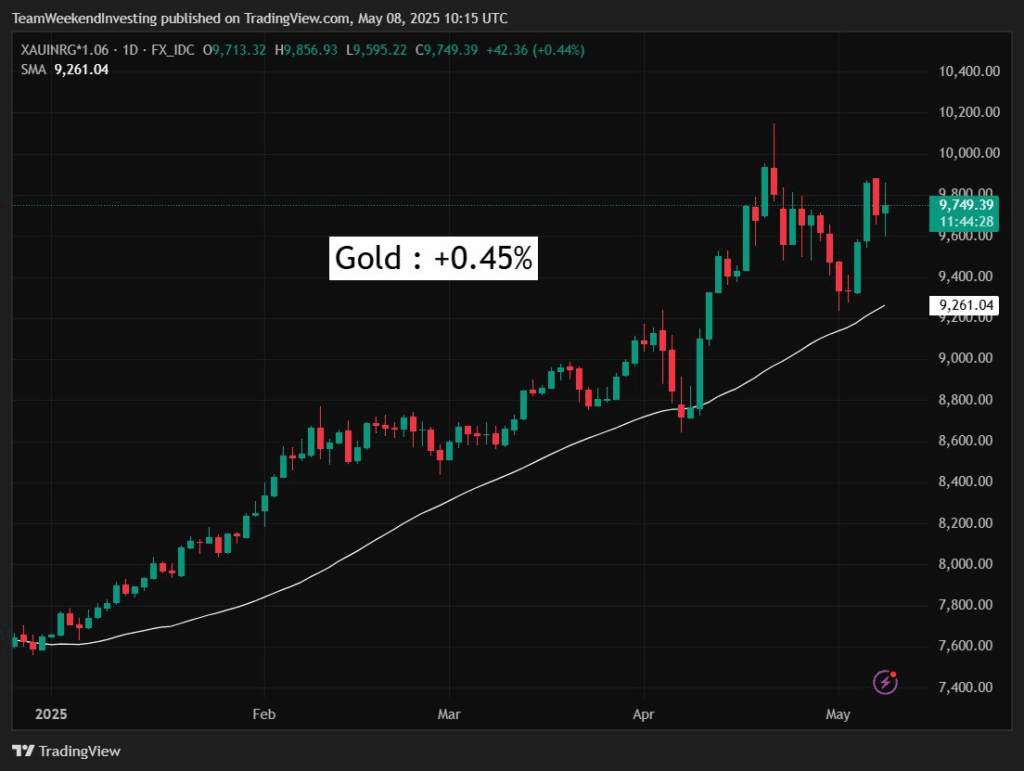
Advance Decline Ratio
The advance-decline ratio was very poor, with advances collapsing and declines surging after noon. The ratio was 99 to 396 on Nifty 500.

Heat Maps
The heat map of the Nifty showed completely red, with major stocks like Mahindra and Mahindra, Bajaj Finance, Sriram Finance, HDFC Bank, ONGC, Maruti, Bajaj Auto, Tata Motors, and others witnessing significant losses.
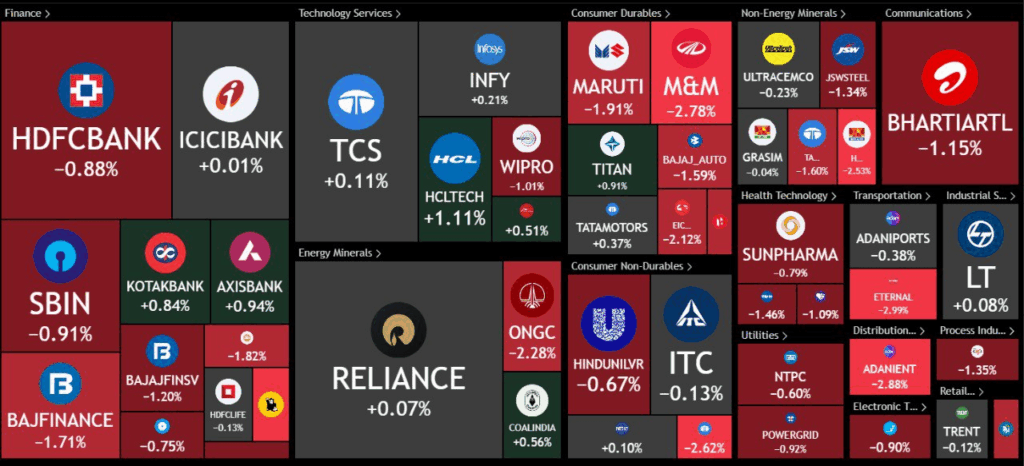
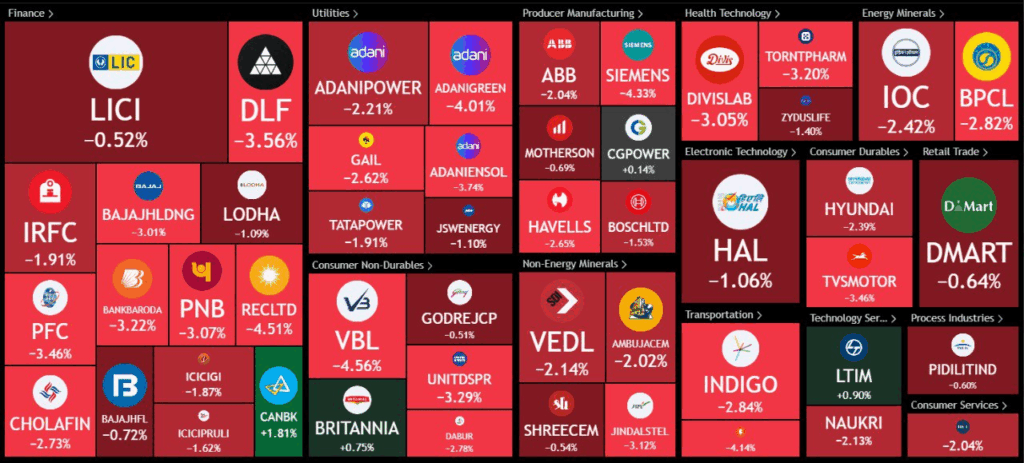
Sectoral Overview
Virtually every sector saw a decline, with tourism and consumption stocks down by 2.7%, autos down by 1.9%, metals losing 2.1%, and real estate losing 2.5%. Only media and IT saw slight gains of 0.2%, though this was negligible.
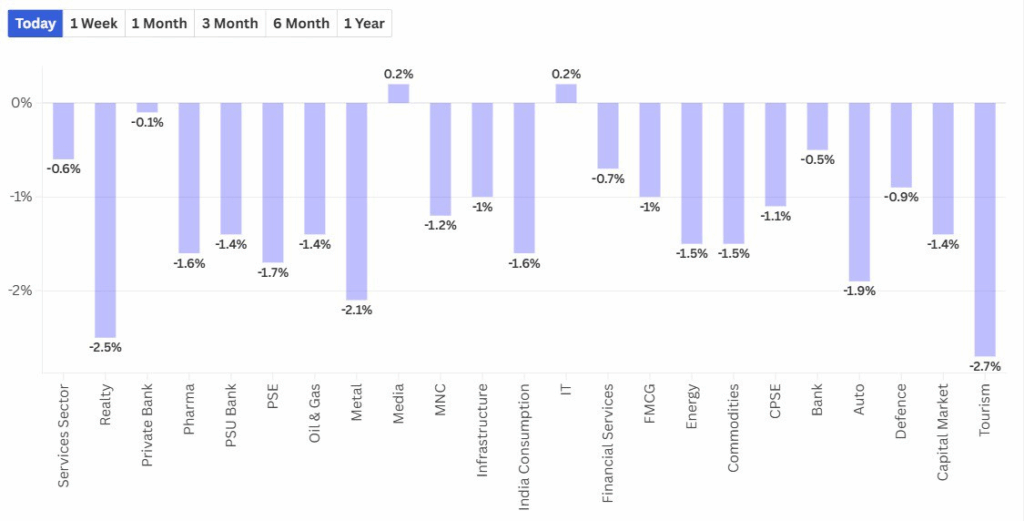
Sector of the Day
Nifty Realty Index
Real Estate Big Loser today, 2.4% down. Godrej Properties, DLF, Sobha, Anantraj, Raymonds held down quite spectacularly.
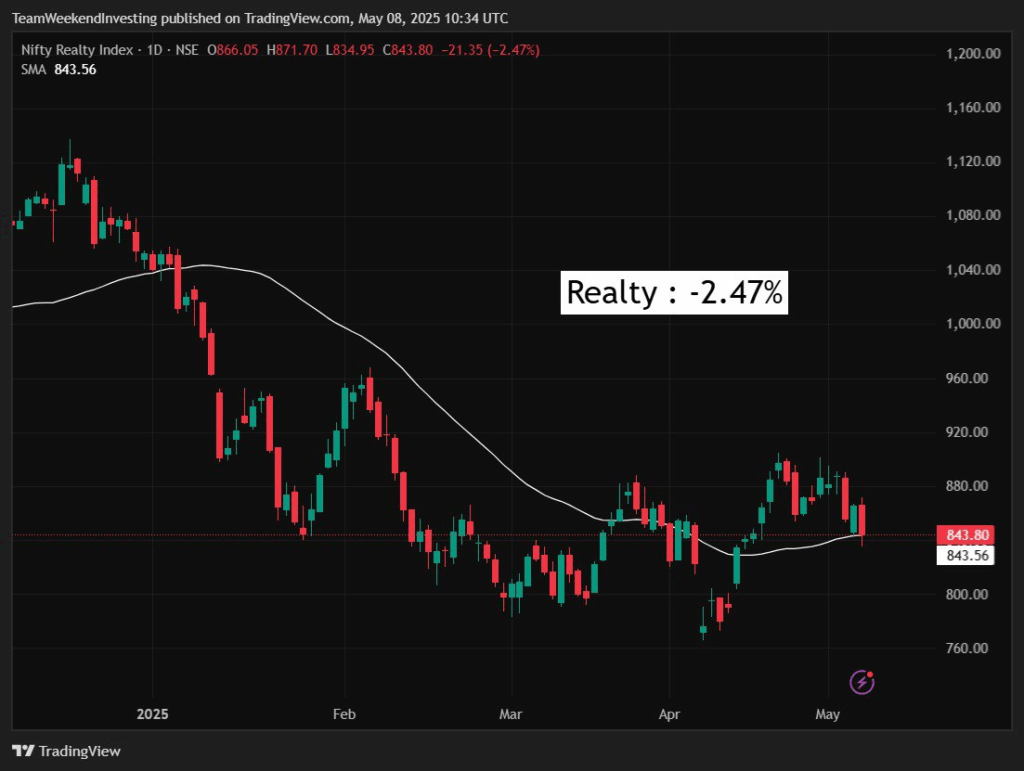

Story of the Day: Avoiding the Gambler’s Fallacy: A Critical Bias in Market Decisions
Gambler’s Fallacy is a belief that a random event is less or more likely to happen based on previous results. This cognitive bias can significantly affect investment decisions, leading to poor outcomes in the markets.
For instance, consider a coin toss. If the first toss lands on heads, followed by more heads on subsequent tosses, it may feel like the next toss is more likely to be tails because the past results seem to suggest an imbalance. This belief is a classic example of gambler’s fallacy, where investors assume past events influence future ones. In reality, each toss is independent, and the odds remain 50-50, regardless of the previous outcomes.
This bias also shows up in the stock market, particularly with stocks that have experienced significant losses. For example, a stock that has already fallen 80% may lead investors to believe it can’t fall any further, assuming it must rebound soon. However, this kind of thinking is flawed, as seen in the case of Vodafone Idea. The stock dropped from 100 rupees in 2015 to around 12 rupees by 2019-20, a 90% decline. Investors might think it can’t drop any further, only to see it fall another 75% over the next few months.
Another scenario illustrating gambler’s fallacy is when stocks experience streaks of gains. For instance, in 2020, Tanla Platforms rose 121% over seven consecutive weeks. Many investors believed the stock would soon correct, thinking that after such a strong rally, a decline was inevitable. However, the stock continued to rise, eventually gaining 13 times its value from that point. This shows how the gambler’s fallacy can lead to missed opportunities as investors wrongly assume that stocks must correct after a strong upward move.
In IPOs, the gambler’s fallacy can also emerge when a stock falls sharply after its listing. Investors may convince themselves that the stock will bounce back, assuming that the drop is due to panic selling by retail investors. For instance, the LIC IPO, one of the largest in India’s history, opened below its issue price in May 2022 and continued to fall over the next few weeks. Despite being backed by the government, many believed it would recover, but it never did, and the stock is still trading below its listing price.
In the markets, stocks often show trends and momentum that contradict our biases. The gambler’s fallacy leads investors to ignore these signals, as they try to force a reversal based on previous outcomes. Recognizing this bias is essential to avoid poor decision-making and the emotional traps that can lead to significant financial losses.
What’s your take on today’s story? Share your thoughts in the comments below! Thanks for reading, and if you found this blog insightful, feel free to share it with your friends!
WeekendInvesting launches – The Momentum Podcast
In this episode of the Momentum Podcast by Weekend Investing, we sit down with Sudheer , a software engineer from Infosys who shares his honest and inspiring investing journey—from early losses in derivatives and scams to his turnaround using Weekend Investing’s smallcases.
💡 Hear how Sudheer allocates ₹30,000/month, balances risk with gold, navigates market dips confidently, and the crucial mindset shift he learned through momentum investing.
👉 Don’t miss Sudheer’s powerful advice for new investors and the importance of discipline and long-term thinking.
Fill in the form below to be part of this exciting series : https://forms.gle/HDbEk9xrTjVecW2c9
Disclaimers and disclosures : https://tinyurl.com/2763eyaz







